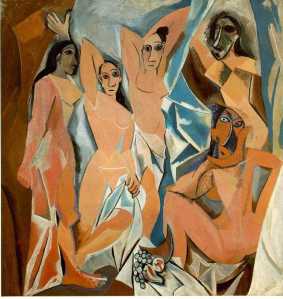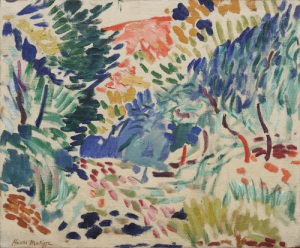Depending on which particular version of the text one holds, the experience of reading Joseph Conrad’s “The Heart of Darkness” can vary greatly. In “How to Read a Book,” Chapter 5 in his novel The Textual Condition, Jerome McGann argues that “the linguistic and linear reading model may not by any means comprehend the structure within which the reading process is to be executed” (108). He moves to explain his concepts of “spatial” and “radial” reading; the former concerning the text’s aesthetic and positioning on the page, and the latter the various related contexts in which we engage while reading. In other words, although strictly speaking the words themselves in each edition of Conrad’s novella are the same, the reading of a particular edition is informed by a multitude of non-linguistic and non-linear signifiers and codes. In my readings for this seminar I was exposed to three unique editions of “Heart of Darkness”: firstly, a digitized version of its original 1899 publication in Blackwood’s Magazine, then a plain-text version online at Project Gutenberg, and finally in hardcover form, in a 1992 collection of Conrad’s short fiction. Needless to say, each of these readings was coloured by the particular version’s physical appearance on the page (my spatial reading), as well as its engagement with the story’s various contexts (radial reading).
Visually speaking, Blackwood’s Magazine presents “Heart of Darkness” in a vastly different manner than does Project Gutenberg or the hardcover collection of Conrad’s short fiction, and this unique spatial reading in turn informs radial reading. In Blackwood’s the story is printed in three installments, newspaper-style, in two narrow columns, with the text justified and the date of printing on each page. This presentation enables a sort of vicarious radial reading. As I was perusing Blackwood’s I was cognizant of the sheer newness of this initial publication, and how it would have felt to read it in 1899. This realization triggered an exploration of its surrounding contexts, enabled by the copious amount of advertisements, other features, and editorials contained in the magazine, all of which enriched my reading and interpretation of “Heart of Darkness” in this original context.
The Project Gutenberg version of the text is completely minimalist and devoid of contextualizing or structuring material, which presumably limits any reading other than the linear/linguistic. However the simplicity itself provides a sort of context; the fact that a plain-text, e-book version of “Heart of Darkness” even exists is a testament to its established position in our literary canon, a realization which stimulates a response in the reader to asses the reasons behind the novella’s critical and popular success. This e-book is explicitly geared toward anyone and everyone with Internet access; the story has evidently transcended its original Blackwood’s audience, and the reader cannot help but process this fact.
Finally, I encountered the text in actual book form, where it was consciously arranged, situated and published within Volume III of The Complete Short Fiction of Joseph Conrad. Here the text is clearly and simply displayed, but as with Blackwood’s the surrounding materials provide a radial reading of significant richness. This compilation features its own contextualizing materials, including a “Conrad Timeline” and various introductory remarks. The book is likely intended for scholarly reading; a complete collection alludes to an intended reader who wants to engage with Conrad as an author rather than “Heart of Darkness” as a story. Thus the reader is made conscious of Conrad’s role in his own works, and we radially read him into our own reading of “Heart of Darkness”. What’s more, I borrowed this book from the library, and while reading I could not help but take note of jotted phrases and comments in the sidelines – vestiges of past readers (See Fig. 1). This further draws attention to the story’s long-established readership, critical heritage, and position in the literary world.
Thus, through engaging with what McGann termed “spatial” and “radial” reading in the various manifestations of Conrad’s “Heart of Darkness” that have materialized since 1899, I have come to see the story as surrounded by its own discourse. Different published versions of the text provide points of access into its bevy of contexts and potential meanings, and each provides a distinct reading experience.
Works Cited
Blackwood’s Magazine. Feb. 1899: 47. Web. 17 Jan. 2012. <http://www.conradfirst.net/view/image?id=22844>
Conrad, Joseph. “The Heart of Darkness.” The Complete Short Fiction of Joseph Conrad Vol III. Ed. Samuel Hynes. Hopewell, NJ: The Ecco Press, 1992. 1-86. Print.
Conrad, Joseph. “The Project Gutenberg EBook of Heart of Darkness.” Project Gutenberg. N.p., 09 Jan 2006. Web. 17 Jan 2012.
McGann, Jerome. The Textual Condition. Princeton: Princeton University Press, 1992. 101-28. eBook.








